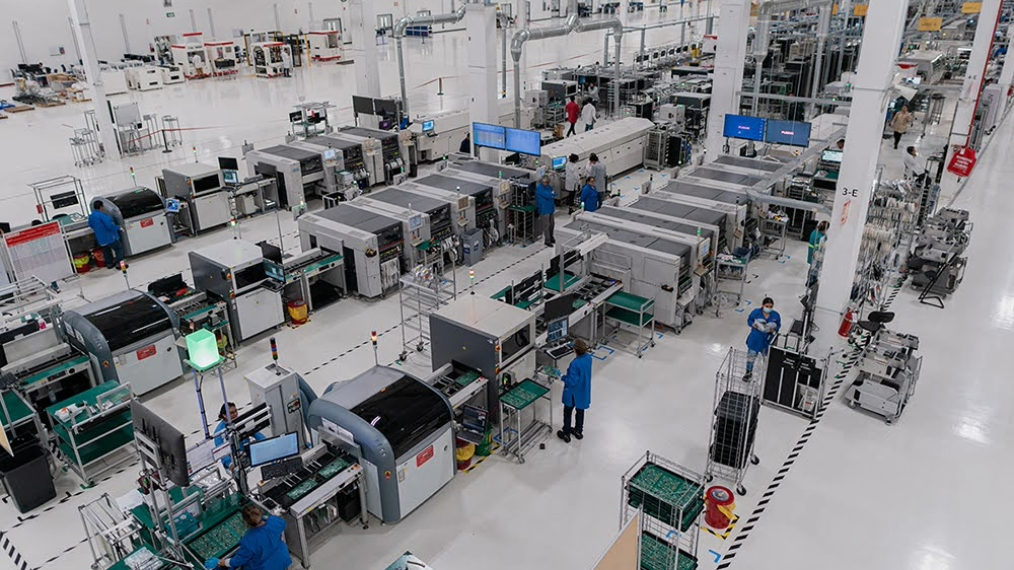How to reduce waste to landfill? Be sustainable by design.

How product design and sustaining services play a key role in mitigating environmental impact.
As awareness of sustainability and eco-friendly products increases, manufacturers are steadily adapting their strategic roadmaps and developing ESG (Environmental Social and Governance) programs. Being “green” is not only something that companies want to do, it has become critical to stay competitive. Being “green” will also be crucial to stay compliant with increasingly ambitious environmental legislation.
Many companies are committing to a lower carbon footprint in response to global climate change initiatives, as well as engaging with technologies such as solar, wind and geothermal. From a product development perspective, however, there is another method of reducing a product’s negative impact on the environment to enable progress towards zero waste. Start the process of managing the longevity of a product’s lifespan in the design phase — from selecting the right materials and considering manufacturing process requirements, to design for service phase gates that focus on repair-ability of product postproduction, part recovery programs that enable part re-use, life-extension solutions and finally developing end of life solutions that embrace recycling.
Smart design and sustaining services solutions can reduce your waste to landfill and deliver more eco-friendly products through four critical strategies:
- Sustainable product design strategies
- Sustainable procurement strategies
- Product life extension
- A proactive strategy for parts recovery and recycling
Let’s consider each of these strategies in greater detail.
How to reduce waste to landfill: Sustainable product design strategies.
80% of all product related environmental impacts are determined during the design phase.
Great design starts with careful consideration of the product requirements. The European Design Council estimates that over 80% of all product-related environmental impacts are determined during the design phase. Successfully creating more eco-friendly products requires an approach to design that gives special consideration to environmental impacts during the whole lifecycle. Sustainable product design strategies cover a number of critical areas, including:
- Design for Recyclability
- Design for Disassembly
- Design for RoHS and WEE Compliance
- Design for Dematerialization
Take the recent design of an automated external defibrillator. The customer was looking for ‘circularity by design’. The product design had to be simple to assemble, to aid mass production, and to disassemble, to facilitate servicing. Our engineers also had to make smart decisions about which materials they used. In this case, it wasn’t enough to be RoHS/REACH compliant, they also had to consider the recyclability of the materials. Due to the number of interconnects, Plexus proposed alternate fastening methods such as heat stake and ultrasonic bonding to reduce the number of assembly piece parts. Using fewer resources provided a more sustainable solution and selecting the right materials increased the proportion of the product that could be recycled at the end of its life.
Various questions should be asked during the design process, such as: Is there an ability to merge parts to result in fewer parts and/or processes to thereby reduce cost and impact? Can we change the finish? Considering and evaluating possible options early in development will enable products to have less environmental impact.
Engineers also need to consider how the product is manufactured and what will happen:
- After it’s launched
- At the end of its life
Design for Service provides the perspective of the ‘Aftermarket Service User’ during the design phase. Imagine a medical device, designed with internal springs that survive roughly 3 years, with a design requirement to service those springs every 3 years regardless of defect. Originally when not considering design for service, an engineer selected a nearly indestructible glue to close the plastic housing together, making service nearly impossible. Good design criteria requirements were used to make this selection:
- The product needed to remain small, the adhesive supported a smaller form factor
- The product required the ability to be protected against liquids, this glue provided that barrier for the internal electronics
- The product itself needed to resist chemical erosion and remain in operation over time even in warmer environments, this glue fit that need
But as the glue was nearly indestructible, servicing the product risked inducing more damage to the device as heavy machinery was required to mechanically break the unit apart – potentially damaging other internal components. With a Design for Service approach, different decisions would have been made prior to product manufacturing reducing damaged products and scrap as a result.
How to reduce waste to landfill: Sustainable procurement strategies.
Design for Supply Chain (DfSC) is another critical link in the chain. A high-performing supply chain will have resilience and responsibility at its heart. To accomplish this, development engineers must work closely with supply chain experts to identify opportunities for supply chain optimization in the design stage.
To meet desired expectations for sustainability, how you source components must also be considered. Begin by asking some of the following questions:
- Are there local options available to limit environmental impact by reducing shipping distances?
- Are your components sourced from suppliers with high ethical standards?
How to reduce waste to landfill: Extend product life.
One of the foundational principles of sustaining services and wider circular economy solutions is to extend product lifecycles as far as possible. This reduces a product’s environmental impact on two fronts. Firstly, from the aspect of avoidance. As a product’s life is extended, the need to extract natural resources (reduce supply), manufacture and transport the new product (emissions) is avoided. Secondly, it reduces the potential for added materials going to landfill by maintaining existing generation products for longer.
Thinking about the end at the beginning and developing an effective end-of-life plan will significantly reduce environmental impact and overall waste to landfill.
How to reduce waste to landfill: Increase recycling.
When products do reach the end of their useful lives, the ability to send all, or part, of the materials for recycling can both boost profitability and reduce waste-to-landfill. Carefully considering how to evaluate a Repair Bill of Materials (rBOM) at the beginning of a services contract through a prescribed material disposition system could yield potential solutions that assist with intentional parts recycling or spare part redeployment programs. For example, a successful part recovery and refurbishment program established for one of our customers provided huge cost savings and prevented over 7,500 circuit boards a year being sent straight to landfill.
The overall impact: Reduced waste to landfill.
Today, engineers have a responsibility to consider a product’s impact on the planet. How will a product be disposed of? Can components be recycled or refurbished for reuse? Does the product hold value at the end of its life, or is it a financial and environmental burden to dispose of?
Employing the “Design for Excellence” methodology at the earliest stages of product development makes it possible to optimize product designs and their required supply chains. Adding a focus on sustainability at the heart of each of these areas will create a better, more environmentally responsible product.
Thinking about the end at the beginning and developing an effective end-of-life plan will significantly reduce environmental impact and overall waste to landfill.


